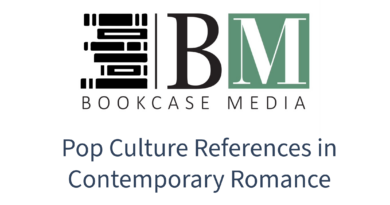Goodbye to the Shirtless Man on the Covers of Romance Novels
Are the days of the shirtless man on the covers of romance novels coming to end?
Romance book covers have always been polarizing. Having been a romance reader since the early 1990’s I have witness an evolution of covers.
People may tell you to never judge a book by its cover. The truth is that many of us choose books based on the cover alone. But let’s be honest we all judge the covers. We also worry about the judgement of others when we are reading.
The Clinch Cover

One of the best things to come out of ebooks and reading on devices like our phones, tablets and e readers is that in general others cannot see what we are reading. I read 99% on my ereader. The way I purchase books is going to be very different from someone who tends to read more physical books. Whenever I search the internet to decide on my next book to read, I am invariably drawn to covers featuring men’s chests. I will look twice at a couple cover and often scroll right past the illustrated covers.
In the 1980s, the romance genre experienced a significant surge in popularity, which led to the emergence of a particular type of cover that non-romance readers tend to associate exclusively with the genre. These covers, known as “clinch covers,” typically portrayed muscular, bare-chested men tightly embracing a swooning woman with her hair dramatically blowing in the wind and her dress clinging to her slender shoulders. In order to create these covers, publishers would organize photo shoots with models, which were then transformed into paintings by artists who added backgrounds and added volume to the hairstyles. One of the most prominent models to emerge from this era was Fabio, who graced the covers of hundreds of romance novels and remains a cultural icon that many people outside of the romance community associate with the genre.
The Object Cover
Many covers in the 1990s had object covers set on a Stepback layout. We would get the object on the front but on the first page of the book, after the front cover had Models posed. If there were models on the cover the step back would have the same models but in a different pose. The Objects featured on these covers would somehow be tied to the theme of the story or a detail that plays a part in the HEA.
The Bare Chest Cover
Shirtless men covers on romance novels are a common that has been used for many years in the genre. These covers typically feature a male model without a shirt, showing off his muscular physique, and often positioned in a way that suggests he is the romantic interest of the female protagonist.
The use of shirtless men covers is often seen to appeal to readers who enjoy visual representations of attractive men and the romance genre themes of passion and desire. However, some have criticized the use of shirtless men covers for perpetuating unrealistic and narrow beauty standards for men and promoting objectification.
The Vector Illustrated Cover
A vector art romance cover is a type of book cover design that uses vector graphics to create a stylized, illustrated image rather than a photographic image. Vector graphics are digital illustrations that use mathematical equations to create shapes, lines, and colors, which makes them easily scalable without losing quality.
In the context of romance novels, vector art covers often feature stylized illustrations of couples in romantic or intimate poses, often with bold colors and graphic elements that are meant to catch the reader’s eye. These covers can have a wide range of styles, from whimsical and cartoonish to more realistic and dramatic. Vector art romance covers have become increasingly popular in recent years due to their versatility, cost-effectiveness, and the ability to create unique, eye-catching designs that stand out in a crowded marketplace
For a list of all time favorite covers- check out here







